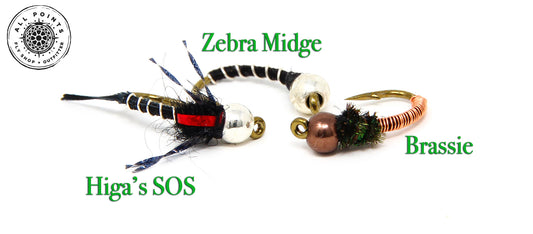All Points Fly Shop + Outfitter Blog

Midges + Winter + The Maine Bar Fly = ?
At our last Maine Bar Fly held at Fore River Brewing, Shaun Baggitt brought us through three nymph patterns. Although these flies are uniquely effective during other times of the...
Midges + Winter + The Maine Bar Fly = ?
At our last Maine Bar Fly held at Fore River Brewing, Shaun Baggitt brought us through three nymph patterns. Although these flies are uniquely effective during other times of the...